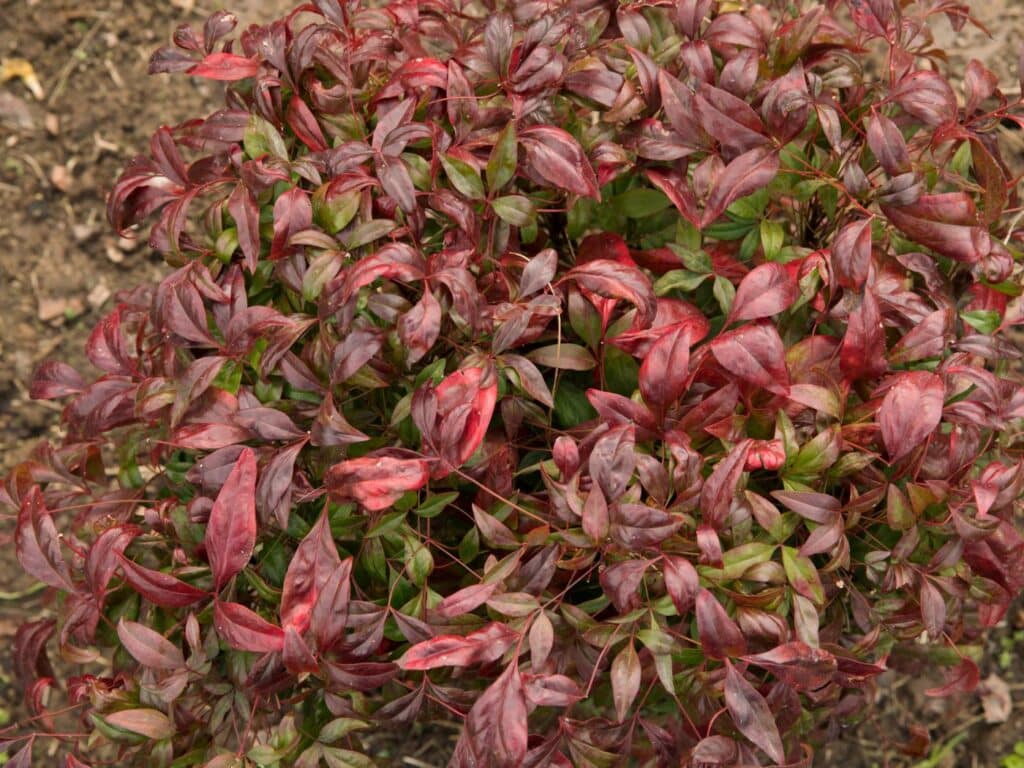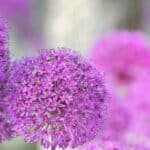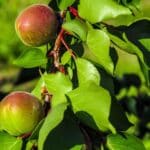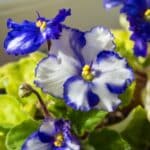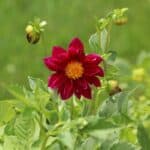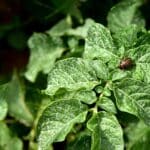Firepower nandina (Nandina domestica ‘Fire Power’), commonly known as heavenly bamboo, is an ideal plant to grow if you want to add more winter interest to your garden.
The foliage of this evergreen shrub changes through the seasons. In spring and summer, the foliage will be light to dark green, and in autumn and winter, these bushes will transform into sensational red hues that can liven up your garden.
These contrasting shrubs are ideal for creating showy borders, hedges, or privacy screens in your garden and can be good container plants. However, gardeners should note that firepower nandina is highly poisonous to humans and animals and shouldn’t be grown where pets or small children might ingest the leaves.
The bright foliage of this plant looks striking if you grow it next to other exciting companion plants like Chinese fringe flowers, ornamental grasses, hellebores, mock oranges, and camellias because these other species also look striking in winter.
In this guide, we will take a closer look at these companion species and share the best ways to use them in your garden.
What to Grow with Firepower Nandina?
Firepower Nandina is mainly grown to add some year-round interest to your garden. This means it is usually best to combine it with other winter-enhancing plants. Many gardeners love to use this plant to keep their gardens full when deciduous plants die back for the winter.
It is usually best to combine plants with similar growing needs together. Heavenly bamboo grows well in containers, but you can plant them directly in the ground. These fiery shrubs will grow well if planted in a sunny spot with moist, well-drained soil. In warmer regions, the bushes can also be grown in partial shade but produce a more vibrant display of color if they receive lots of direct sunlight.
Let’s explore some firepower Nandina companion plants that thrive in a full sun position with moist soil or regular watering.
Chinese Fringe Flowers
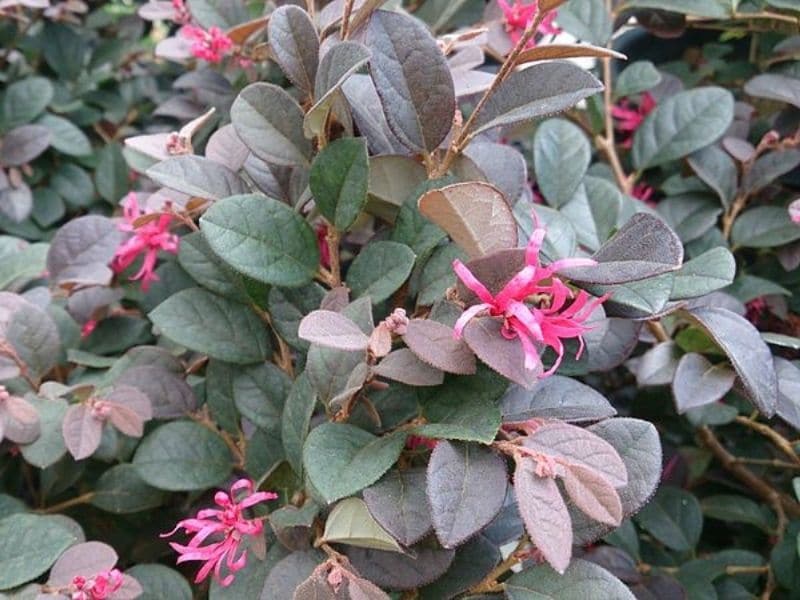
Chinese fringe flowers (Loropetalum) are ideal firepower nandina companions to create showy mixed hedges or borders in your garden. This attractive evergreen blooms during late winter and early spring and will add lots of color to your garden with its showy purple or reddish flowers.
The shrub’s foliage also turns dark purple or red tones during winter and can look attractive next to the fiery hues of nandinas.
This beautiful plant has similar care requirements as Nandinas. They grow well in a sunny position with a minimum of four hours of direct sunlight and they enjoy consistently moist soil but should be planted in well-drained soil to prevent fungi and bacteria growth around their roots and stems.
Loropetalums can become much taller than firepower nandinas and should either be planted behind the shorter shrubs or they should be pruned to 2 feet tall to create a short hedge along with the heavenly bamboo.
Hellebores

Hellebores (Helleborus) are ideal winter flowering perennials to grow in the shaded areas underneath or in front of your firepower nandinas. These charming winter flowers come in various colors including colors like dusky pink, maroon, white, metallic blue, and apricot that can look striking next to the vibrant red shrubs.
These deciduous flowers can tolerate a wide range of conditions. They can grow in most soil types as long as it is rich in organic matter and well-draining. The flowers will flourish in the partial shade created by the taller shrubs.
Hellebores will look striking if you mass plant them in front of your vibrant red shrubs. The evergreen shrubs will also keep your garden nice and full when these flowers start dying back for summer.
Ornamental Grasses
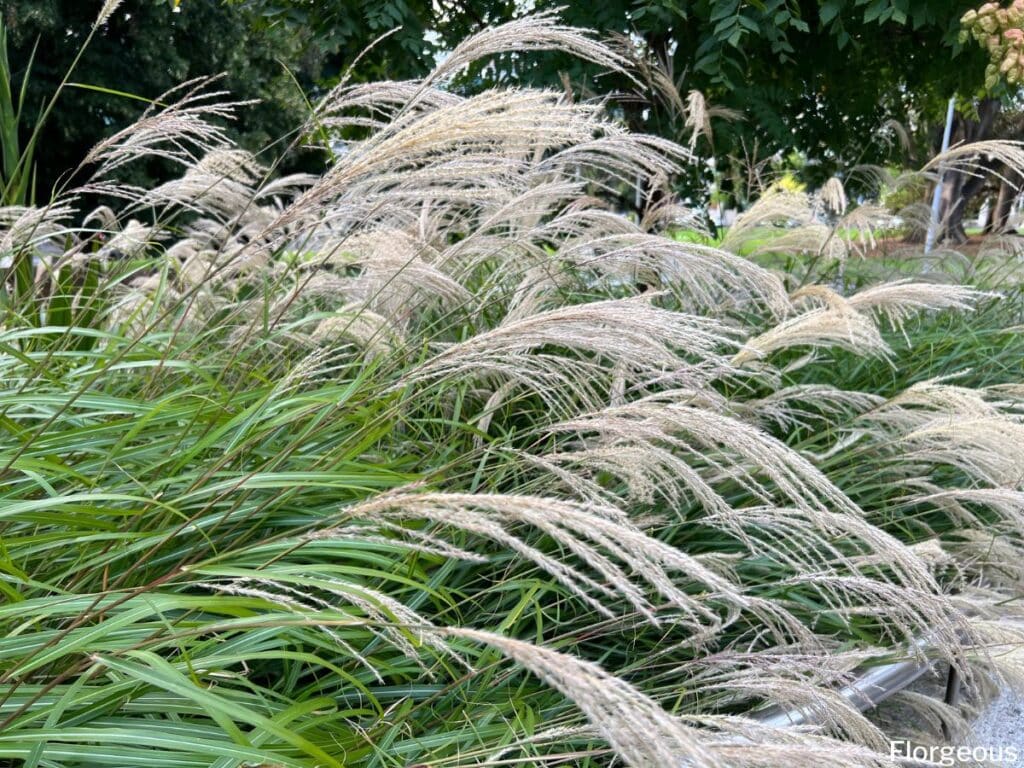
Ornamental grasses can look striking next to vibrant shrubs like Nandinas. Grass varieties like Golden Japanese forest grass, fountain grass, feather reed grass, switchgrass, or little bluestem are some of the best species to include in your garden.
These beautiful grass varieties will add lots of vertical interest to your spaces during summer when they produce lots of feathery plumes. In winter, most of these grasses will transform into golden or reddish hues (in the case of little bluestem), which can give your garden a warm appearance.
The growing conditions for ornamental grasses vary quite a lot. It is very important to only select varieties that can grow well in moist soil with lots of direct sunlight. Shade-loving grasses are not too likely to grow well in a sunny spot.
The best way to pair ornamental grasses with nandina bamboo is to pair them closely. Heavenly bamboo is shorter than most ornamental grass varieties and should be positioned toward the front of your gardens.
Mock Orange
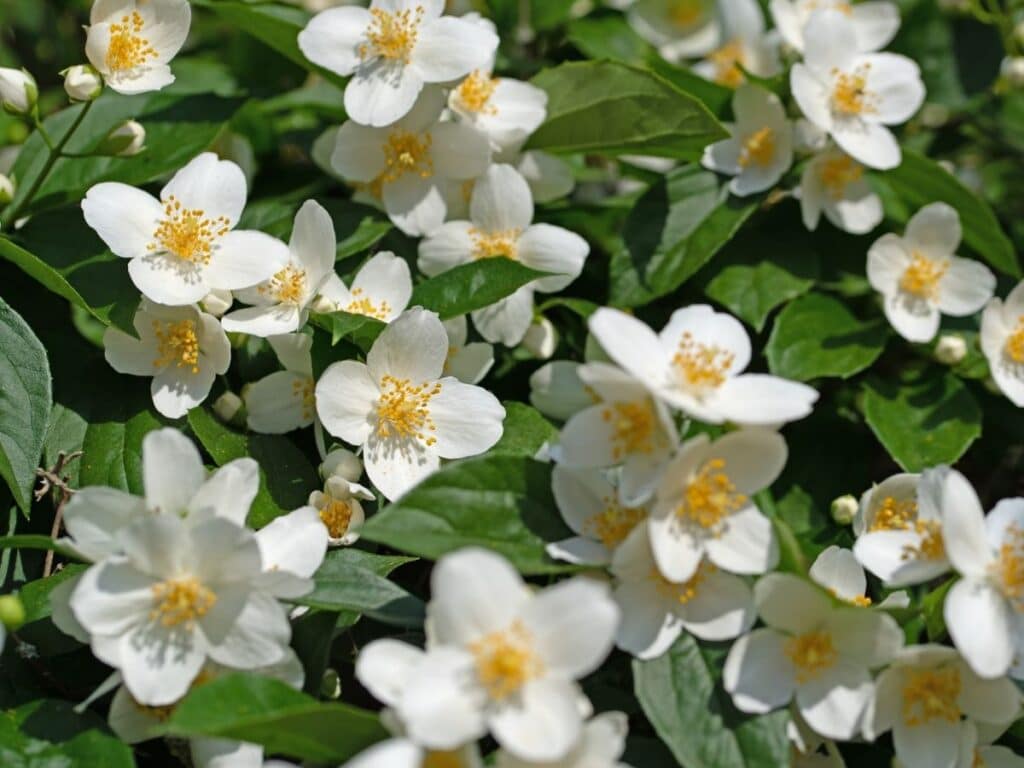
Mock oranges (Pittosporum), Australian laurels, Japanese pittosporums, or Japanese cheese woods are ideal companion plants to include in your garden if you want to grow thick green hedges.
These neat evergreen shrubs come in many different sizes, and their foliage can be light green to variegated in color, with some white, depending on the variety. These dense shrubs also produce tiny white, yellow, or purple flowers known for their fragrant scent.
These shrubs also produce green or orange-colored fruits that will burst open to expose vibrant red seeds that can add lots of color to your garden.
Pittosporums should be planted in fertile soil and can be grown in the sun or in partial shade. They prefer moist conditions but should be planted in well-drained soil.
These shrubs should be used as a backdrop behind firepower nandinas because they can grow up to 20 feet tall and can be pruned to create a neat and tidy appearance.
Camellia
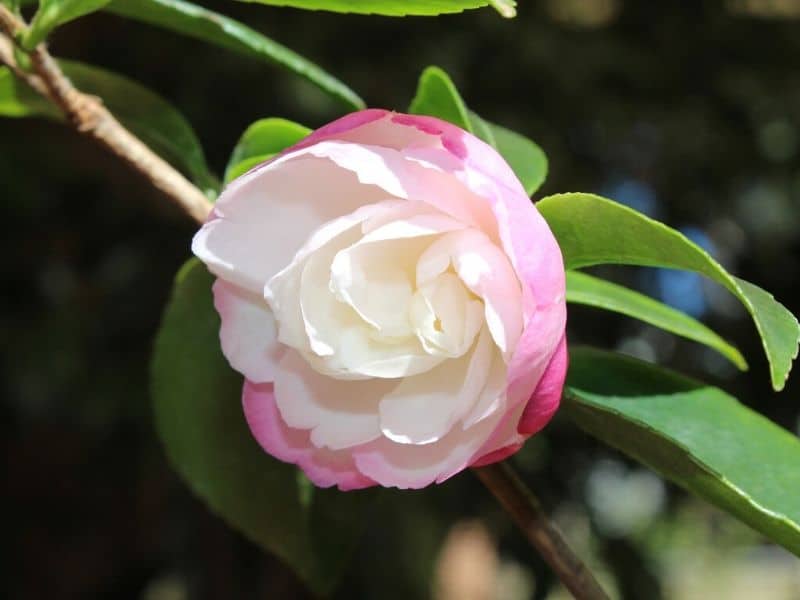
Camellia (Camellia) flowers are good firepower nandina companion plants because they can add lots of winter interest to your garden. These small trees produce large and vivid flowers that look like roses and come in many different colors. Colors like white, peach, or dark pink should look quite interesting alongside the red hues of Nandina bamboo plants.
These plants will grow in neutral to slightly acidic soil types and prefer well-drained, moist conditions. The flowering shrubs prefer partial shade positions because the flowers can scorch if it receives too much sun.
It is usually best to place these small trees towards the back of your garden with the shorter firepower bamboo in the front of your garden.
What NOT to Grow with Firepower Nandina?
Firepower nandinas need plenty of direct sunlight, or they won’t appear as beautiful. It is best not to grow these shrubs underneath taller trees or shrubs.
This beautiful shrub is highly toxic to humans. To avoid accidental ingestion, it is best not to grow it next to edible berry shrubs. It is especially important not to grow it next to a red edible berry variety like red currant.
Landscaping Ideas for Firepower Nandina and Companions
These interesting shrubs are ideal for creating showy winter scapes. They can look striking next to plants that are also colorful during wintertime. Here is a quick look at some of the best ways to use and combine firepower nandinas and their companions in your garden.
Container Gardens
Firepower nandinas can grow well in containers. They can be pruned to form a dense container shrub and can be placed next to other container species like ornamental grasses, mock orange shrubs, or hellebores to create a decorative container garden.
Hedges and Privacy Screens
You can use the shorter firepower nandina shrubs in front of a row of taller shrubs like fringe flowers, mock orange, or camellias. The shorter bamboo plants will conceal the base of these taller hedges and will add more dimension to your garden. The combination of shrubs is ideal for creating showy privacy screens filled with lush color and growth.
Garden Centerpieces
If you want to create an interesting focal point in your garden then you can grow a tall and striking plant like camellias in the middle with lots of firepower nandinas around it. Hellebores mass planted around the firepower nandinas will create a very striking effect, especially during wintertime when the shrubs are vibrant red and the flowers are in full bloom.
Final Thoughts
Firepower nandina is a very interesting hedge or garden filler that can look striking next to companion plants like camellias, mock oranges, ornamental grasses, hellebores, or fringe flowers. These plants are ideal for creating exciting borders, privacy screens, and garden centerpieces and will help you grow a very vibrant and exciting winter space.
We hope you found this companion planting guide useful and will have a lot of fun combining these different plant species in your garden. We are certain that all these plant combinations will bring you lots of joy during winter, which tends to be bleak and dull.
Image by gdemiceu/depositphotos

